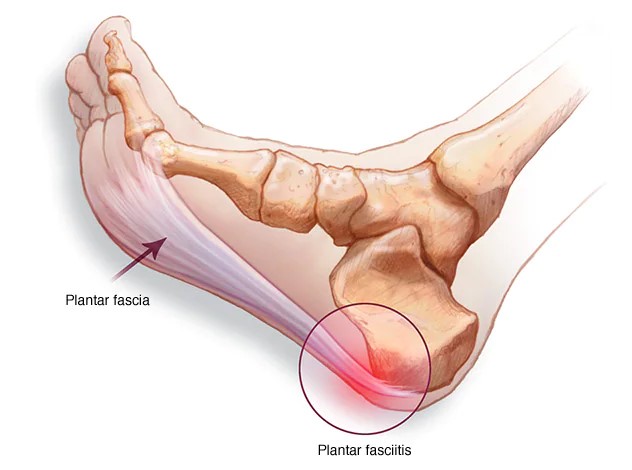Share Post
All about Plantar Fasciitis: Will Plantar Fasciitis Go Away On Its Own?
All about Plantar Fasciitis is an inflammation of the plantar fascia, which is a tissue in the foot that is used during walking and movement. Plantar fasciitis can be caused by a variety of factors, including shoe type, foot structure, overuse, and walking surface type. Heel pain is the most common symptom of plantar fasciitis
If you wake up one morning and it feels like you’re walking on glass, you’ve just discovered plantar fasciitis, also known as plantar fasciitis heel pain. Over thirty-five percent of people over the age of sixty-five suffer from it. Athletes, runners, cyclists, and weekend warriors are particularly affected.
It hurts a lot to put pressure on the inflamed point after a night of rest and healing. The pain usually subsides after a few applications. If it doesn’t go away and remains extremely painful throughout the day, it’s probably getting worse.
Will Plantar Fasciitis Go Away On Its Own?
All about Plantar Fasciitis: The natural disappearance of plantar fasciitis is possible, but its resolution is contingent upon its underlying cause. If, for instance, the condition arose from wearing ill-fitting shoes, acquiring a more supportive pair could alleviate the pain without intervention.
Although Plantar Fasciitis may naturally resolve over time, it can take over a year for the associated heel pain to subside. However, if left untreated, it can result in complications. Chronic heel pain may prevent you from engaging in activities you usually enjoy and alter your gait. The longer the pain persists, the more your body will try to compensate, potentially leading to knee, foot, back, and hip issues. Therefore, it is crucial to seek treatment for Plantar Fasciitis rather than relying on it to disappear on its own.
All about Plantar Fasciitis
All about Plantar Fasciitis: Plantar fasciitis is an inflammation of the plantar fascia, a ligament that connects your heel to your toes and supports your foot’s arch. It may not appear to be anything on the outside, but it can be felt on the inside. The most common plantar fasciitis symptom is heel pain.
Some people also experience pain in their foot’s arch. When you put weight on your foot, such as standing, tension or stress in the plantar fascia increases. When you push off on the ball of your foot and your toes, the tension increases. Both of these movements are common when walking or running. The fascia loses some of its elasticity or resilience over time and can become irritated by routine daily activities.

All about Plantar Fasciitis: Plantar fasciitis is best treated with stretching. The mainstay of treatment is a dedicated stretching program for your plantar fascia, which significantly reduces the likelihood of recurrence.
The three best plantar fasciitis stretches are:
- Lean forward onto a countertop, spread your feet apart, and place one foot in front of the other. Squat down, flexing your knees, and keeping your heels on the ground as long as possible. As the heels rise in the stretch, your heel cords and foot arches will stretch. Hold for 10 seconds before relaxing and straightening up. Rep 20 times more.
- Standing Calf Stretch: Lean against a wall, one knee straight, heel on the ground. Your opposite knee is bent. As you lean, your heel cord and foot arch stretch. Hold for 10 seconds before relaxing and straightening up. A rep for each sore heel 20 times. It is critical to keep the knee fully extended on the stretched side.
- Cross your affected leg over your other leg to massage the plantar fascia. Take hold of your affected foot with your affected hand and pull your toes back towards your shin. This causes tension/stretch in the foot arch/plantar fascia. Hold the stretch for ten counts and repeat ten times.
All about Plantar Fasciitis: The truth is that plantar fasciitis should resolve on its own, but it takes time for the feet to return to normal, depending on the individual. Most people are unable to engage in strenuous exercise as they once did when they have plantar fasciitis, simply because the pain is excruciating. Without treatment, problems may develop. All about Plantar Fasciitis: Plantar fasciitis can go away on its own, but it may take more than a year for the pain to go entirely.
If you’re experiencing pain and discomfort from plantar fasciitis, consider speaking to your healthcare professional about custom orthotics, or visit Feldman and Leavitt Foot & Ankle Specialist.
As a general rule, surgical bunion procedures are performed on an outpatient basis in an Alberta Health Services (AHS) approve Surgical Center or in a Hospital. Surgical procedural costs are covered by AHS or the patient may opt for private surgery to avoid a waiting time.

